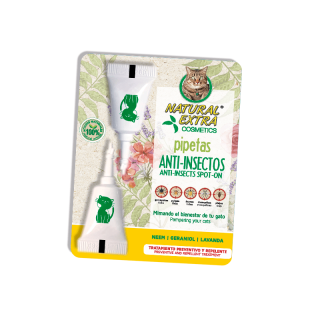Anti-parasite or flea collars for cats
Welcome to our exclusive selection of anti-parasite and flea collars for cats at Lara Vital.
Here you will find the most advanced and safest protection for your feline companion, ensuring their well-being and peace of mind at all times.
Shop Cat Flea & Anti-Parasite Collars Online
Anti-parasite collars and flea collars for cats, what are they and what are they for?
Cat flea collars are your first line of defense against those little invaders that can make your feline's life much less pleasant. These collars, designed specifically for our cat friends, constantly and in a controlled manner release active substances that repel or eliminate parasites such as fleas, ticks and even lice.
Best of all, this protection extends beyond the animal itself. When choosing a collar, it is important to the materials used and the duration of effectiveness promised by the manufacturer, thus ensuring your pet's well-being and comfort for as long as possible.
Not only do deworming collars protect your cat from the discomfort and health risks posed by these creatures, but they also act as a shield for your home, preventing it from becoming the new home of an infestation. By releasing small doses of chemicals on a regular basis, they create a protective environment around your cat, keeping them safe from unwanted visitors and the diseases they can transmit.
How to use anti-parasite collars for cats?
Simplicity and effectiveness are the main advantages of deworming collars. Placing one around your cat's neck is all it takes to provide long-lasting protection against fleas and ticks. Unlike topical solutions such as pipettes, which require monthly applications, collars can offer protection for a period of three to twelve months. A prime example is Bayer Laboratories' Seresto Collar, which, with its combination of imidacloprid and flumethrin, offers up to 8 months of continuous protection. These ingredients have proven to be highly effective in controlling infestations, repelling and eliminating ticks, larvae and adult fleas.
The key is to fit the collar correctly, making sure it is neither too tight nor too loose. The general rule of thumb is to allow two fingers' space between the collar and the cat's neck, ensuring comfort and safety. In addition, it is essential to consider the, especially if it is young, to readjust the collar as it grows.



